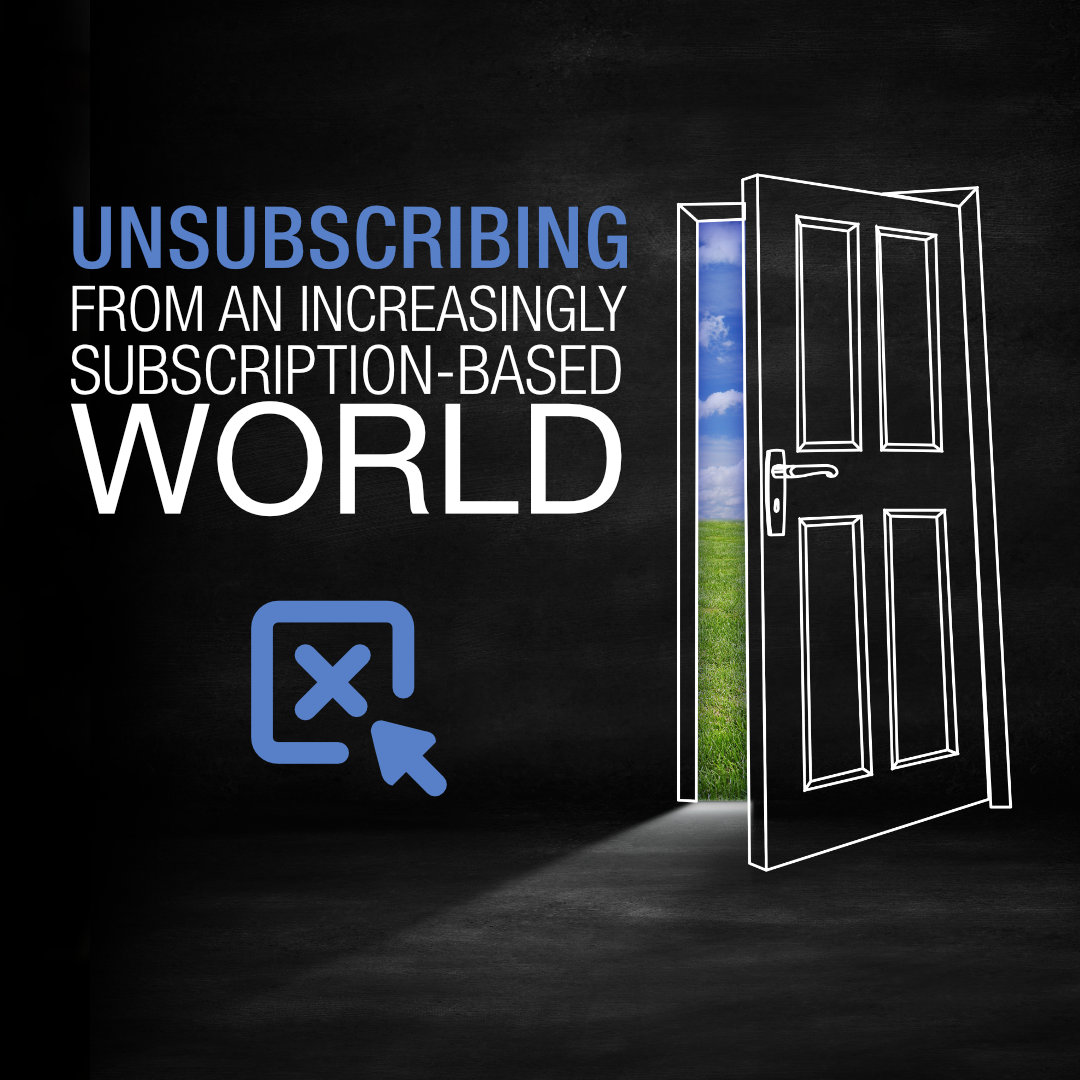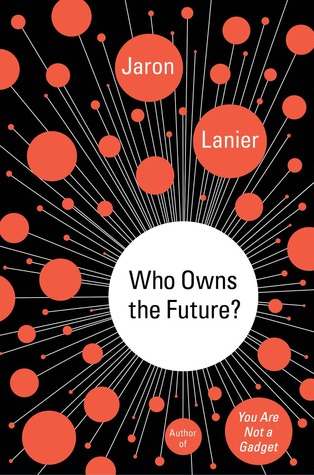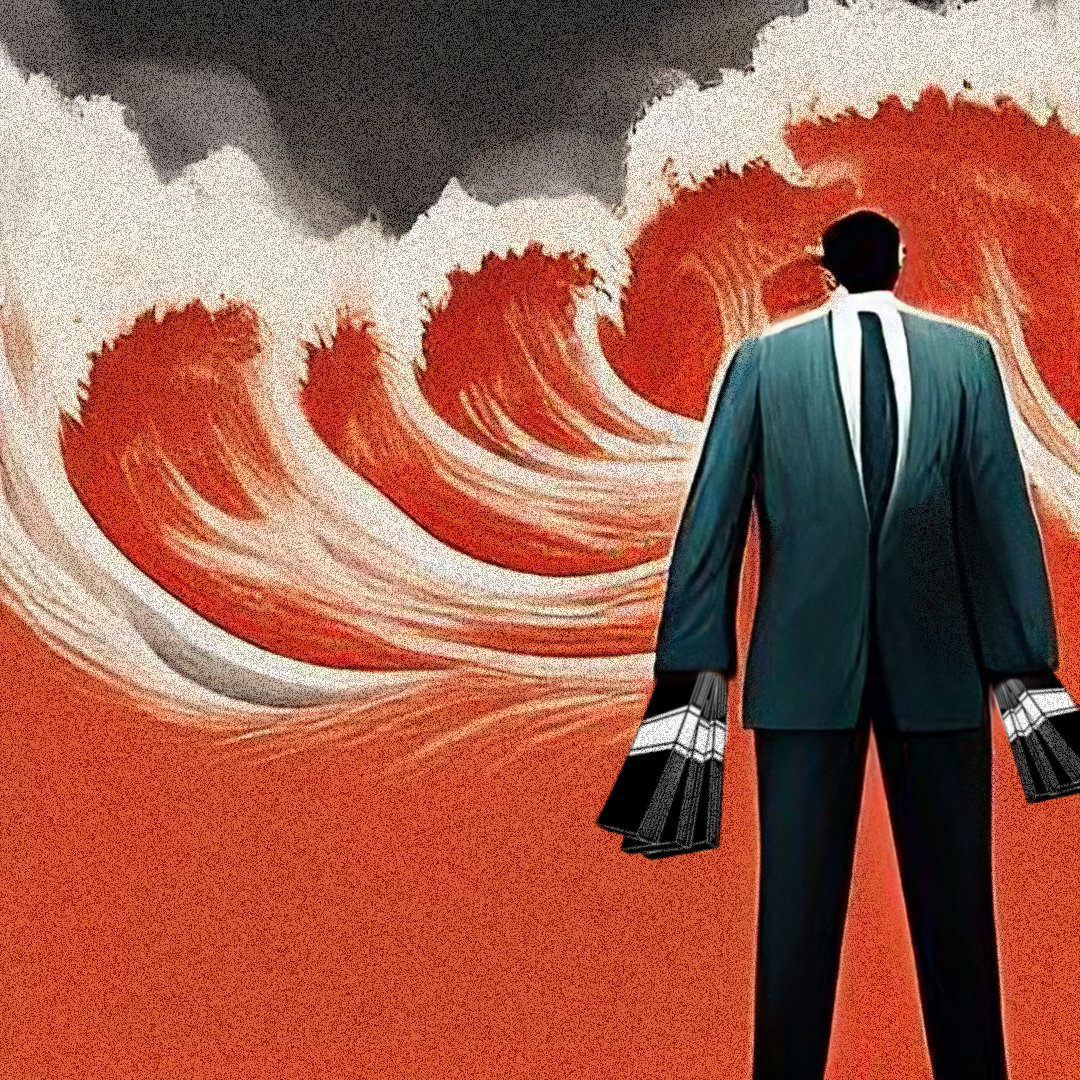
Unsubscribing from an Increasingly Subscription-Based World
Estimated Reading Time:
Sometimes I blog about topics that aren’t about writing, like the design posts or the Texting or Email for Work? post. The following is the result of the trial run I conceived in November 2019 and started in January 2020. The test involved unsubscribing from an increasingly subscription-based world. In today’s age, we see a massive increase in micro-transactions, monthly services, recurring payments, and subscription-based models in a variety of industries. There used to be a time where you would be able to buy your software and own it. Those days have long since left.
Today, people subscribing to use a product is the new normal. Consumers are also comfortable with brand loyalty, even if it means they don’t truly own their one-time purchases. Take Microsoft’s eBook store, for example. Microsoft ultimately decided to remove their book store, deleting everyone’s books in the process and refunding them for the purchases. The act sparked some outrage, as some books cannot be easily obtained elsewhere, but the rage fizzled out.
Microsoft could do this because it was within their terms of agreement with the consumer. Terms of agreement with a big tech company is a much broader discussion. Let’s stay on topic with subscription models. We all have monthly bills ranging from rent/mortgage, internet, car insurance/payments, phone, power, credit card(s), and tuition fees. The list could go on. You may have even subscribed to some software tools, resource sites, or streaming services. Each of these low-cost items adds up to a large sum every month. Are they all worth the price?
The Personal Realization About Subscription Models

In November 2019, the realization of my monthly subscriptions hit me from two angles. The first was after reading Who Owns the Future? By Jaron Lanier. I could write a whole blog post about how this book has elaborated on my interests in the evolution of big tech and surveillance technology. The book talks about copyright issues rooting from the digital copy function. It explains the more significant problem of Silicon Valley, privatization, and subscription-based models. Jaron Lanier also explores where we will go with technology and how all industries are being assimilated. He also makes a bold recommendation of removing yourself entirely from social media to prevent the manipulation engine from affecting your thoughts and attitude towards life. The book is well worth the read.

Continuing, the second realization I had was when the web hosting control panel, cPanel, switched over to a pay per licence model. The change happened in July, but the hosting company I use didn’t implement the changes until November, which directly affected the hosting prices I provide for my clients.
At that time, I was also looking for a solution for my accounting. I had been exploring a highly regarded monthly subscription app that has the user act as the bookkeeper. I had also subscribed to industry-standard design software, a more expensive phone plan, multiple cloud storage services, and a couple of streaming services. The addition of cPanel’s new pricing models made me review all of my monthly payments and subscriptions. I wanted to understand where my money was going and how much I would be spending. The monthly costs were higher than I thought, and I began to wonder: what am I using these services for?
Finding Value in What You Use

It is easy to forget about what you pay for monthly if it is a few dollars here and ten there. You may also find it convenient to have it ‘just in case.’ I took a hard look at what I subscribe to and found that I didn’t need, nor desired, most of these services.
The cPanel change? I had to reconstruct my server model, letting me reduce the monthly cost. The phone plan? I never reached the data cap, so I found a reduced plan. The accounting app? I ultimately hired a professional accountant firm who is an expert in the field, where I am not. The software? I found competitive one-time payment software that met my needs. The cloud storage? It turns out I was storing files that I didn’t use and hadn’t looked at in years. The streaming services? I got rid of them and started purchasing directly from the distributors and artists.
I couldn’t find value in the subscription services. Ultimately, I realized I didn’t need a lot of them, and there were other options available that didn’t require monthly payments. The one-time fees weren’t overly expensive either as technology has evolved in recent years, making them more affordable. There were a few I kept, like a single cloud storage subscription and my web hosting. In January 2020, I removed five subscriptions that I didn’t need.
I have had friends asked me if I miss the services that I dropped, and I have not. Truthfully, I thought I would lose some of the convenience of streaming music and their playlists or the high-end features of specific software. As of now, I’ve found if I didn’t remember the song’s name, it wasn’t very good, from the start. My work hasn’t been impacted by the software change either. Most of the new tools are just flashy tricks and I have primarily used the same functions for well over fifteen years. It’s the theory that you apply to the tools that makes them effective, not another new shiny software update.
Ultimately, removing the subscriptions has helped me save money, focus more on what I have, and find better means of spending my income. An example would be going out for a nice dinner or buying music directly from musicians instead of them getting the low payment from streaming services.
Owning What You Pay For

The concept of owning what you pay for is slowly phasing out of society. People pay for expensive homes, obtain mortgages that lock them in for many years. The same can be said about cars. We are bound to the features that our smartphone plans offer us due to the demand of social constructs and work standards. Not too long ago, we operated cellphones as phones and used computers for production. When work was done, the computer stayed at the desk.
We once owned our tech, and now we see far more companies move to a subscription-based service. The model is seen in web tools, programs, apps, and even hardware. The recurrence ties us into a month-to-month system where we do not have ownership of what we possess. We agree to license the usage of the product for a limited time for the comfortable conveniences they offer. The terms ultimately bind us to the service, and we can no longer see our lives without these comforts (which wasn’t that long ago when you look back and somehow we survived).
Why Did Subscription-based models Increase?

The subscription-based model works exceptionally well for companies. They can charge the services at a lower rate, bringing in more people, and more likely than not, they will have longer-lasting customers. The one-time-by methodology was killing companies. It risked losing people after purchase or them leaving before due to a high price tag. In the end, the recurring payments have offered sustainability for companies and allow a continual cash flow every month, which looks good on the books. Who wouldn’t want to use this model?
The Consumer’s Needs

On the flip side, the subscription-based model allows people to have access to more tools and media than ever before. They can enjoy the hassle-free experience. In terms of software, it also cuts down on people obtaining cracked copies. The same can be said about piracy with music, video games, and movies. If the price point is so low, why would anyone bother risking stealing a file online when they can conveniently get a legal copy?
Peace of Mind

Quality of Time
From a quality standpoint, minimizing the amount of clutter in your life will create a greater appreciation for what you do have. It can also allow you to think about your purchase critically, and when you do, fully invest in it. You’ll find you dislike some things more and enjoy others on a higher level. In the end, your time becomes more intentional, increasing your life’s quality.
Knowledge
From a knowledge standpoint, leaving subscription-based software for work can offer the opportunity to learn a new interface. For me, I’ve been able to explore new creative directions by applying the same design theory from a new perspective. Previously I fell into the trap of passively implementing the design theories I was familiar with, constantly trying new tools to take shortcuts, and I was not expanding my abilities.
Financial
From a financial standpoint, the clarity of knowing exactly where my money goes every month helps as well. Some subscription-based models are paid annually, some bi-annually, while others are month-to-month. These ranging charges can increase someone’s stress level when viewing your bills at the end of the month due to the fluctuation.
Unsubscribing from an Increasingly Subscription-based World

No one is telling you to unsubscribe everything, remove social media, and head for the hills. However, I recommend taking a long hard look at the things you do use and decide if they bring you value. For me, I had previous issues with the subscription-based model. I didn’t like being locked into a company who can change their terms of agreement whenever they see fit and have it impact my life. The products, software, and media I buy I own as is, and it doesn’t change with an update or the company discontinuing the service.
Unsubscribing from an increasingly subscription-based world offers some control back into your life, mental clarity, and lightens the finances. So, can you remove a subscription from your life? How about a second one? Try it. You may be surprised to learn a few things about yourself.

About Konn Lavery
Konn Lavery is a Canadian author whose work has been recognized by Edmonton’s top five bestseller charts and by reviewers such as Readers’ Favorite, and Literary Titan.




